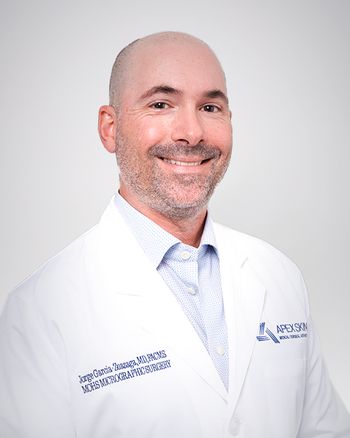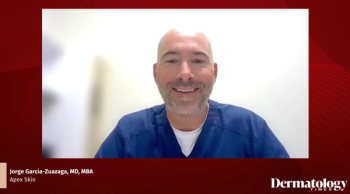
- Dermatology Times, June 2022 (Vol. 43. No. 6)
- Volume 43
- Issue 6
- Pages: 9
Protect Yourself From Risk With Strategies Beyond Insurance
Approximately 36% of all physicians will be sued at least once before they are aged 45 years.
Dermatologists continually rank among the specialists least likely to be named in malpractice suits, according to studies conducted over the past decade. Although that trend is comforting, it does not mean that dermatologists need not worry about facing their day in court. In fact, approximately 36% of all physicians will be sued at least once before they are aged 45 years.1
Malpractice liability is a reality of practicing medicine, but it is not the only legal threat dermatologists face. There are plenty of potential practice and personal risks unrelated to malpractice that could result in a lawsuit. These risks include employee claims (harassment, wrongful termina- tion), slip-and-fall incidents in or outside the medical office, fiduciary liability on the practice’s 401(k), cybersecurity breaches, contractual liability from business deals, and landlord risks for physicians who own rental real estate.
It is important to note that policies may have limitations and exclusions. For this reason, many dermatologists look beyond insurance for additional strategies to mitigate risk and shield their personal and practice assets.
RISK MANAGEMENT
The first strategy to protect against liability is to reduce risk through behavior. The term risk management is one that most dermatologists will recognize as it applies to their medical careers, beginning with a dedication to practicing the best medicine possible and maintaining their training and continuing medical education (CME).
Beyond this medicine-centered approach, dermatologists should incorporate other risk management techniques in their practices. For example, effective patient communication, especially when dealing with difficult patients or bad outcomes, is an indispensable skill for any physician. Other risk management essentials include procedures for handling protected health information and managing communication technologies, from blogs and websites to texting and email.
Many of these strategies are covered in our CME monograph Risk Management for the Practicing Physician, which is nationally certified for up to 5.0 hours of Category I CME credit.2
ASSET PROTECTION
Regardless of how diligently physicians work to mitigate personal and professional risks, mistakes may happen and bad outcomes can occur. Because insurance can come up short due to coverage limitations or exclusions, many dermatologists employ asset protection planning as a second line of defense.
The goal of asset protection planning is to position a physician’s assets in a way that makes it difficult, and in certain cases nearly impossible, for a future lawsuit plaintiff to gain access to them. A solid protection plan can help doctors feel more secure knowing that their assets will be safe.
PRACTICE ASSET PROTECTION
Although the first priority of most physicians is to protect their personal assets, they should not overlook practice asset protection. Cash flow and income and any real estate and valuable equipment owned by the practice are important to protect.
The good news is that the tools that protect cash flow also typically help save on income taxes and build retirement wealth. These include qualified retirement plans, such as defined benefit plans, 401(k) and combination plans, nonqualified plans, and captive insurance arrangements If a practice owns real estate and/or valuable equipment, limited liability companies (LLCs) can separate these assets from the main practice and lease them back to the main practice entity.
PERSONAL ASSET PROTECTION
Personal asset protection encompasses tools to shield a physician’s home, retirement accounts, other investment accounts, second home or rental real estate, and valuable personal property.
EXEMPT ASSETS
Leveraging state-exempt assets is a priority, because they enjoy the highest level of protection and they involve no legal fees, state fees, accounting fees, or gifting programs. In other words, a physician can own the exempt assets outright in their name, have access to any values, and still have assets 100% protected from lawsuits against them.
Each state’s laws identify assets that are absolutely exempt from creditor claims. Many states provide exemptions for qualified retirement plans and indvidual retirement accounts, cash within life insurance policies, annuities, and primary homes. An asset protection expert will be able to explain the exemptions in their state.
LIMITED LIABILITY COMPANIES
Beyond exempt assets, LLCs are common legal tools used by asset protection experts to help physicians shield assets from potential claims. Understanding how LLCs provide protection starts with examining both inside and outside risks.
Inside risks are those that threaten an LLC and its assets from within. These are risks that the legal entity faces because of its activity. Examples
of inside risks for an LLC that owns real estate would include slip-and-fall claims. One of the features of the LLC is none of the passive owners is liable for the liability of the business.
Outside risks are potential claims against the owners’ interests in the LLC. One example would be a successful claim against a dermatologist for malpractice that may lead to the plaintiff wanting to access the assets outside of the practice (personal assets) to satisfy the judgment. For outside risks, LLCs are asset protectors because the law gives a very specific and limited remedy to creditors coming after assets in either type of entity. When a per- sonal creditor pursues a physician whose assets are owned by an LLC, the creditor cannot seize the assets in the LLC.
If the creditor cannot seize LLC assets, what can the creditor get? The law normally allows for only 1 remedy: a charging order, which a creditor can be granted by a court against a debtor’s interest in an LLC. Essentially, this order allows the creditor to get distributions. The creditor must legally be paid any distributions that would have been paid to the debtor, but they cannot get inside the LLC or gain management or voting rights. The charging order is meant to allow the entity to continue operating without interruption while providing some remedy for creditors.
To use an LLC to shield assets, it is essential to have the assets owned by the entity, rather than in the physician’s or their spouse’s name. Then the physician and their spouse can be made the parties in control of the entity and assets (LLC manager), as well as the passive owners (LLC members).
TRUSTS
Irrevocable trusts also can play an important role in asset protection plan- ning, especially in the approximately 20 states that have passed laws that allow a domestic asset protection trust (DAPT).
DAPTs are unique irrevocable trusts in that individuals can be both the grantor and a beneficiary of the trust. When there is no lawsuit concern, individuals can access the trust assets as a beneficiary. If a physician has lawsuit claimants, however, the trust can be written so that the trustee cannot make distributions to the physician, as they are “under duress.” In this way, a DAPT can allow the physician both access to the trust assets when the coast is clear and protection when lawsuits and creditors are at bay. As such, it can be very attractive for physicians who live and practice in a state with DAPT trust legislation.
Like all legal tools, the asset protection benefits of LLCs and DAPTs are reliant on proper drafting of the documentation, appropriate ownership arrangements, and adherence to yearly maintenance and formalities. If all of these are in place, a dermatologist can enjoy solid asset protection for a relatively low cost.
CONCLUSION
The practice of dermatology has inherent lawsuit risks, as do other areas of our lives, from outside businesses and real estate ownership to driving. Although insurance is fundamental, risk management and asset protection planning can combine to help dermatologists shield assets beyond the limits of insurance if liability does occur. Common asset protection tools include exempt assets, LLCs, and trusts. A dermatologist should work with an asset protection expert when employing any of these tools.
Mandell is an attorney and founder of the wealth management firm OJM Group (www.ojmgroup.com) in Cincinnati, Ohio.
Disclosure
OJM Group, LLC (OJM), is a US Securities and Exchange Commission (SEC)–registered investment adviser with its principal place of practice in the state of Ohio. SEC registration does not constitute an endorsement of OJM by the SEC nor does it indicate that OJM has attained a particular level of skill or ability. OJM and its representatives are in compliance with the current notice filing and registration requirements imposed upon registered investment advisers by those states in which OJM maintains clients. OJM may only transact practice in those states in which it is registered or qualifies for an exemption or exclusion from registration requirements. For information pertaining to the registration status of OJM, please contact OJM or refer to the Investment Adviser Public Disclosure website (
This article contains general information that is not suitable for everyone. The information contained herein should not be construed as personalized legal or tax advice or as a recommendation of any particular security or strategy. There is no guarantee that the views and opinions expressed in this article will be appropriate for your particular circumstances. Tax law changes frequently; accordingly, the information presented here is subject to change without notice. You should seek professional tax and legal advice before implementing any strategy discussed here.
References
- Kornmehl H, Singh S, Adler BL, Wolf AE, Bochner DA, Armstrong AW. Characteristics of medical liability claims against dermatologists from 1991 through 2015. JAMA Dermatol. 2018;154(2):160-166. doi:10.1001/jamadermatol.2017.3713
- Mandell CH, Mandell DB, O’Dell JM, Foos CC. Risk Management for the Practicing Physician. American Academy of CME, Inc, and Guardian Publishing; 2019. Expiration date: September 15, 2022. https://www.ojmgroup.com/product/risk-management-for-the-practicing-physician-book/
Wealth Planning for the Modern Physician and Wealth Management Made Simple are available free in print or by e-book download by texting DERM to 844-418-1212
Articles in this issue
over 3 years ago
Hidradenitis Suppurativa in Pregnancyover 3 years ago
Explore New Tactics for Acne Scarsover 3 years ago
Meeting the Challenges of Acne in Adultsover 3 years ago
Acne Update: 2022’s Top 5 Trendsover 3 years ago
Hair Happeningsover 3 years ago
Think Globally to Combat Acneover 3 years ago
Targeted Solutions Simplify Widespread Itch Careover 3 years ago
Epsolay Receives FDA ApprovalNewsletter
Like what you’re reading? Subscribe to Dermatology Times for weekly updates on therapies, innovations, and real-world practice tips.

















